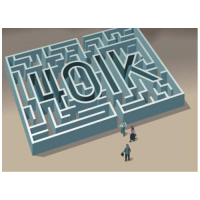Rise of 401(k)s Hurt More Americans than It Helped
 graphic: financial-freedomonline.com)
graphic: financial-freedomonline.com)
According to a new report from the progressive think tank the Economic Policy Institute (EPI), the rise of 401(k) accounts has contributed to social inequality by dimming the retirement prospects of millions of Americans with the result that “retirement insecurity has worsened for most Americans as retirement wealth has become more unequal.”
Intended to supplement, not replace, social security and traditional pensions, 401(k) accounts are called “defined contribution” retirement plans, because the present monetary contribution of the employee is defined but the future benefits are unknown, as they depend on the performance of investment markets. This is in contrast to “defined benefit” plans like traditional pensions, in which the future monetary benefits of the employee are defined, but the employee may not be required to pay in.
401(k) accounts have caused greater inequality in several ways, says the report. First, “because most 401(k) participants are required to contribute to these plans in order to participate, whereas workers are automatically enrolled in defined-benefit pensions and, in the private sector, are not required to contribute to these plans…higher-income workers are much more likely to participate in defined-contribution plans.”
Those higher income employees are also more likely to have a defined benefit pension and “have more disposable income and a higher investment-risk tolerance, receive larger tax breaks, and are more likely to work for employers that provide generous matches.”
Lower-earning workers whose nest eggs are invested in 401(k)s, in contrast, “are increasingly affected by shocks to stock and housing markets and broader economic trends. Much of the 401(k) era coincided with a long bull market propping up household wealth measures even as traditional pensions became scarcer and the savings rate declined.” After “this house of cards collapsed in 2001, and then again at the end of 2008…median [retirement] account balances declined and retirement savings grew more unequal.”
Other findings include the following:
- Only 52% of middle-income households had savings in a retirement account in 2010, but their savings came to only 8.12% of total savings in retirement accounts. In contrast, 88% of the households in the top income-fifth had retirement accounts, which came to 72% of total retirement savings. These disparities in retirement savings are only partly explained by income inequality.
- White households have more than six times as much saved in retirement accounts as Hispanic and black households, which is even larger than differences in participation.
- Seven in ten households headed by someone with a college degree or more have savings in retirement accounts, but only 4 in 10 households headed by someone with a high-school diploma or GED have such savings. College-educated households have nearly six times as much saved high school-educated households, a growing gap only partly explained by income inequality.
Not everyone has been disadvantaged by the rise of the 401(k), however, for they helped employers cut costs and injected capital into Wall Street, which led to the bursting bubbles of 2001 and 2008.
-Matt Bewig
To Learn More:
Retirement Inequality Chartbook: How the 401(k) Revolution Created a few big Winners and many Losers (by Monique Morrissey and Natalie Sabadish, Economic Policy Institute)
Move Over, 401(k): IRA Fees are what Really Hurt (by Eric Rosenbaum, CNBC)
- Top Stories
- Unusual News
- Where is the Money Going?
- Controversies
- U.S. and the World
- Appointments and Resignations
- Latest News
- Trump to Stop Deportations If…
- Trump Denounces World Series
- What If China Invaded the United States?
- Donald Trump Has a Mental Health Problem and It Has a Name
- Trump Goes on Renaming Frenzy






Comments